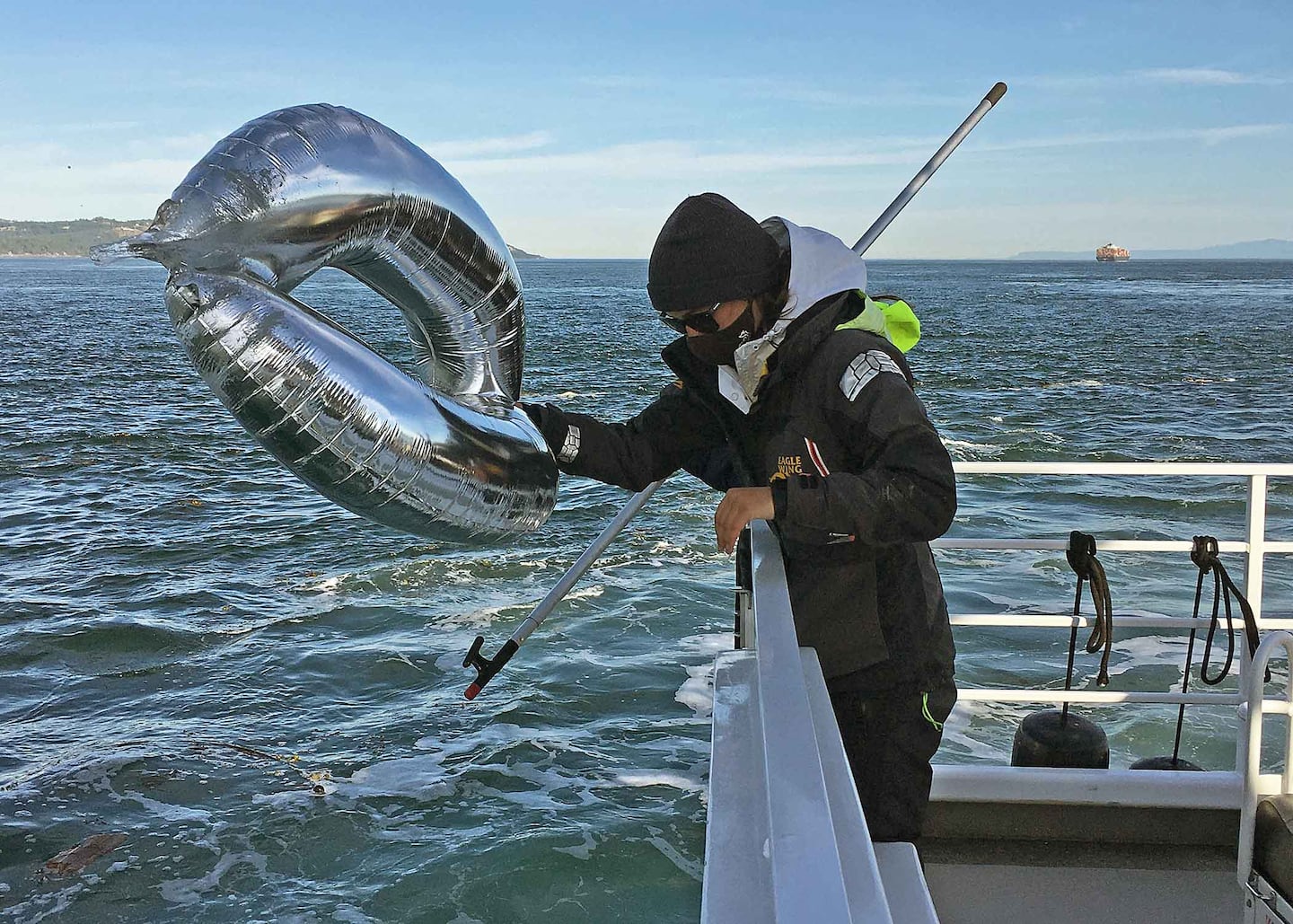If you’ve ever released balloons at a graduation, birthday party or another celebration, you probably didn’t think about where they would end up.
But something so simple can have deadly consequences for wildlife across the Pacific Northwest, including whales, seals, porpoises, sea lions, otters, as well as birds and land-based animals, the Pacific Whale Watch Association said.
PWWA is sounding the alarm and urging people not to release balloons for any reason.
PWWA naturalists in British Columbia and Washington said they have seen and retrieved hundreds of balloons so far this year and are finding more in the Salish Sea than ever before.
In the last week alone, nearly 100 balloons were recovered, and during two recent whale-watching tours, naturalists picked up ten large mylar party balloons that could have easily been ingested by nearby humpback whales or other wildlife, PWWA said.
Naturalists said releasing balloons is environmentally destructive and dangerous to wildlife.
“For example, a humpback whale who is lunge-feeding can accidentally scoop a floating balloon into its mouth – and with throats about the size of a grapefruit, balloons can create huge problems for the whale or other wildlife nearby,” said Valerie Shore, a naturalist with Victoria, BC-based Eagle Wing Tours.
Balloons can also cause fires if they get tangled in power lines, transformers and other equipment. That possibility is heightened by this week’s record-breaking heat and resulting dryness.
PWWA suggested alternatives to releasing balloons, such as planting trees or flowers in someone’s honor, flying kites, flags, banners or inflatables, or displaying garden spinners.
For more information visit www.pacificwhalewatchassociation.com
©2021 Cox Media Group







